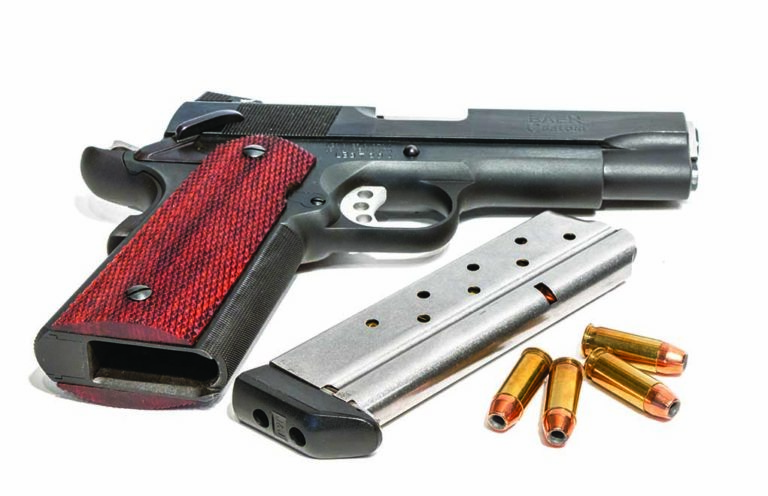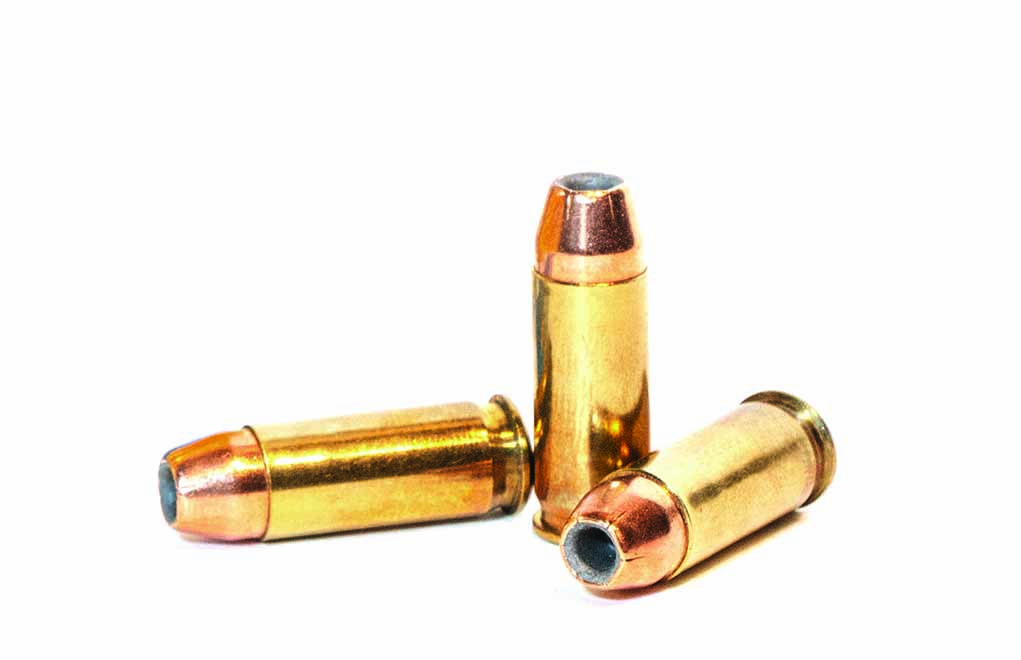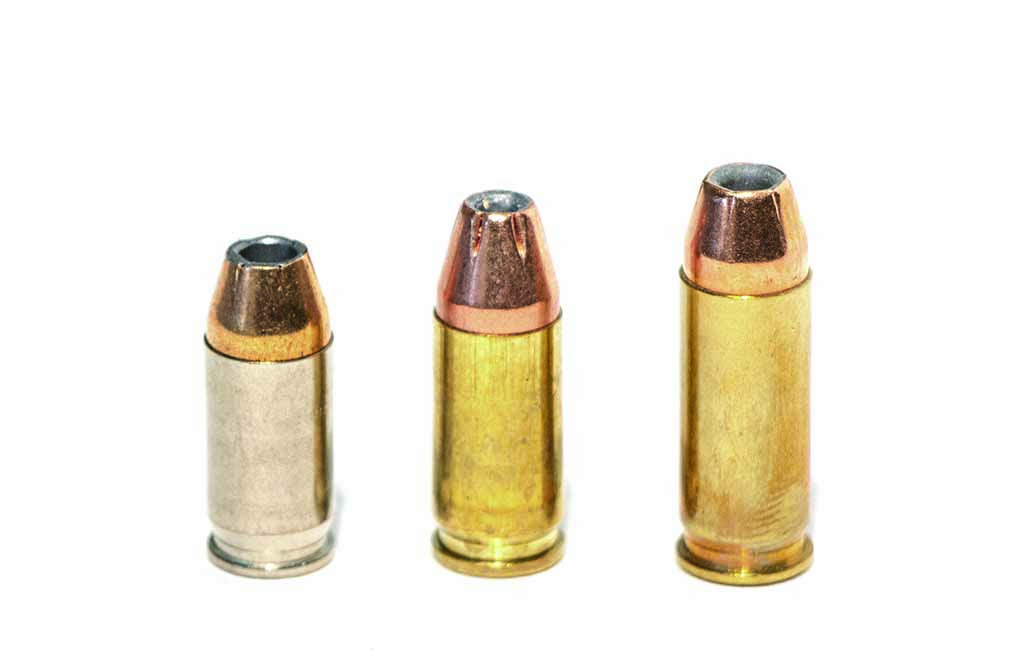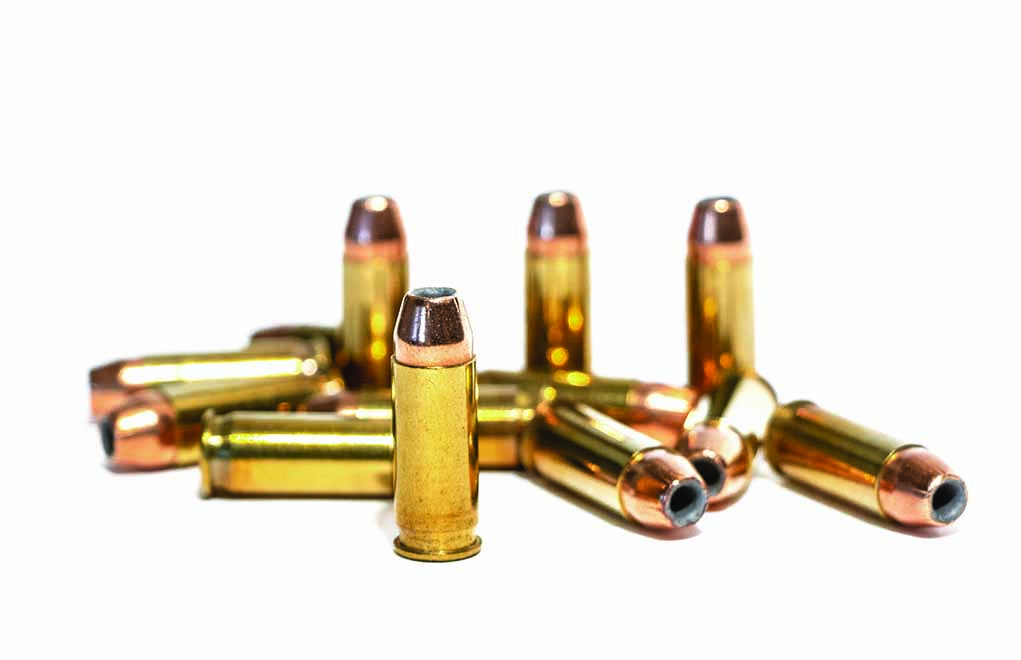
A defensive CCW cartridge you’ve never considered: the .38 Super.
The story of the .38 Super starts in 1900, when Colt introduced the John Browning-designed M1900 .38 Automatic pistol. Interestingly, this was two years prior to the introduction of the 9mm Luger. The 9mm Luger was almost immediately adopted by the German military, but the .38 Automatic (ACP) was rejected by the U.S. military, which ultimately adopted the .45 ACP and the Colt Government Model in 1911.
Now, ironically, our troops are carrying 9mm pistols.
In 1929, Colt tried again with an improved version of the .38 ACP. This modernized cartridge had a new name—.38 Super—and the only improvement amounted to nothing more than the cartridge being loaded to a higher pressure: 36,500 psi, as compared to 26,500 psi. This resulted in a velocity increase of about 200 fps.
The King of Competition
Some mistakenly assume the .38 Super is based on the 9mm Luger. It isn’t; the .38 Super case is semi-rimmed, smaller in diameter and longer than that of the 9mm Luger.
The Super was only marginally successful until about 35 years ago, when it became a favorite of practical pistol competitors. In IPSC competitions, there’s a power factor that must be met. It’s calculated by multiplying a cartridge’s bullet weight by its muzzle velocity. Then, the product is divided by 1,000.

At the time, 175 was the lower limit for “major class” (currently, the IPSC major power factor is 165). Competing with a “major” pistol was a huge advantage, because hits were worth an additional point. By using a barrel with a supported chamber in a 1911 pistol, competitors found they could make major with the Super. And, a 1911 in .38 Super held more ammo than one in .45 ACP.
For a time, the Super was the king of competition.
More Self-Defense Cartridges:
- Medium-Bore Match-Up: .38 Special vs 9mm
- .380 Vs 9mm: Reasons To Consider The Small ‘Nine’
- .45 ACP vs 9mm: Which Is Better?
- 10mm Vs .45 ACP: Making the Right Choice
The Super for Defense
But what about the .38 Super as a defensive handgun cartridge? Texas Ranger Frank Hammer carried one, and my good friend and former Texas sheriff, Jim Wilson, is fond of the cartridge as well. For an auto-pistol cartridge, the velocity is high, and the recoil is noticeably less than you’ll feel from a .40 S&W or a .45 ACP. From an external ballistics standpoint, the Super might not be the equivalent of a big-block V8 but is, for sure, a supercharged small block.
However, ammunition options in .38 Super are not limitless and, on top of that, .38 Super ammo can sometimes be hard to find. I had a limited supply of .38 Super ammunition on hand from Wilson Combat and Buffalo Bore and fed it all through a Les Baer 1911 Commanche. I started with five, five-shot groups with each load from a sandbag rest at 15 yards. Two of the loads performed very well, and the other two delivered about average accuracy from a 4.25-inch gun at the tested distance. Even so, overall, the Commanche averaged 1.5 inches for 20 five-shot groups at 15 yards.
.38 Super Terminal Performance
Of course, this is well within any reasonable expectation for precision from a defensive handgun. The more important question is, What kind of terminal performance can be expected from a .38 Super?

To find out, I tested three of the four loads I had on hand—one was an FMJ load—in 10 percent ordnance gelatin. On average, the major difference I found when comparing the .38 Super to 9mm Luger was a substantial increase in penetration. Looking at all the 9mm Luger loads I’ve tested over the years, the average penetration depth in 10 percent ordnance gelatin was about 14 inches. The average penetration depth for the three .38 Super loads tested was 2.5 inches—17 percent—deeper. (For what it’s worth, there are only about six quality defensive loads available for the .38 Super, so I tested half of them.)
This increase in penetration is due to two factors.
The first is the increase in velocity, which is about 200 fps when compared to 9mm Luger loads with the same bullet weight. The second is the reduction in recovered-bullet diameter. Due to the higher velocity, bullets fired from the .38 Super tend to deform, with a smaller frontal diameter, which averages about 1.4 times the original bullet diameter.
However, this slight reduction doesn’t negatively impact .38 Super terminal performance, because the higher impact velocity, combined with the dynamic expansion of the bullet, creates a larger wound cavity with the potential for more-serious wounding. This is another way of saying the .38 Super makes a bigger “splash” than the 9mm.
Grand Invention
When it comes to the .38 Super, I think there are several things to consider. The first is that, on average, it will out-penetrate the three most common defensive handgun cartridges (the 9mm, .40 S&W and .45 Auto) commonly chambered in semi-automatic pistols. The recoil of the .38 Super is more manageable than that of a .40 S&W or .45 Auto, and it has a higher velocity than the 9mm Luger. It also allows for a substantial increase in capacity when compared to a .40 S&W or .45 Auto. From the standpoint of the defensive handgunner, all these things are important … and this should make you wonder why the Super .38 is not more popular.

Colt, Rock Island, EAA and Llama all offer pistols chambered in .38 Super, as do many custom 1911 builders (such as Les Baer).
Regardless of its performance or popularity as a defensive handgun cartridge, we have to acknowledge that it’s yet another grand invention of John Moses Browning, who also gave us the .45 Auto, .380 Auto, 1911 and the M2 machine gun. Even after 100 years, those three cartridges and two firearms are still being trusted all over the world.
Editor's Note: This article originally appeared in the 2020 Concealed Carry issue of Gun Digest the Magazine.

Next Step: Get your FREE Printable Target Pack
Enhance your shooting precision with our 62 MOA Targets, perfect for rifles and handguns. Crafted in collaboration with Storm Tactical for accuracy and versatility.
Subscribe to the Gun Digest email newsletter and get your downloadable target pack sent straight to your inbox. Stay updated with the latest firearms info in the industry.

![Best Concealed Carry Guns In 2025 [Field Tested] Wilson Combat EDC X9S 1](https://gundigest.com/wp-content/uploads/Wilson-Combat-EDC-X9S-1-324x160.jpg)


![Best 9mm Carbine: Affordable PCCs [Tested] Ruger Carbine Shooting](https://gundigest.com/wp-content/uploads/Ruger-Carbine-Shooting-100x70.jpg)
![Best AR-15: Top Options Available Today [Field Tested] Harrington and Richardson PSA XM177E2 feature](https://gundigest.com/wp-content/uploads/Harrington-and-Richardson-PSA-XM177E2-feature-100x70.jpg)

Great article…told me just what I needed to know…many thanks…
good caliber for any killed my first deer with one db
Good article, but no table of testing results.
Very enlightening article. I am considering a 1911 in either 9mm or .38 special but did not know that the 38 Super was designed for semi-autos and was completely different from the 38 Special which is for revolvers. Some details about price comparisons would be useful.
One small error might be in the paragraph that discussed penetration into ordinance gelatin. For the 9mm round, the depth was 14 inches. For the 38 Super, it was 2.5 inches, which was stated as deeper. There must be a misplaced decimal point.
Yup, thought the same thing till the dashes sank in (should have been parenthesis) :>). Saying it another way, ‘the Super 38 penetrated 2.5 inches deeper (total of 16.5 inches) than the 9mm.’. 16.5 is approximately 17 percent greater than 14. Gotta love parenthesis.
Please stop the autoplay videos, the’re very annoying.
Excellent article on the 38 Super. Thank you